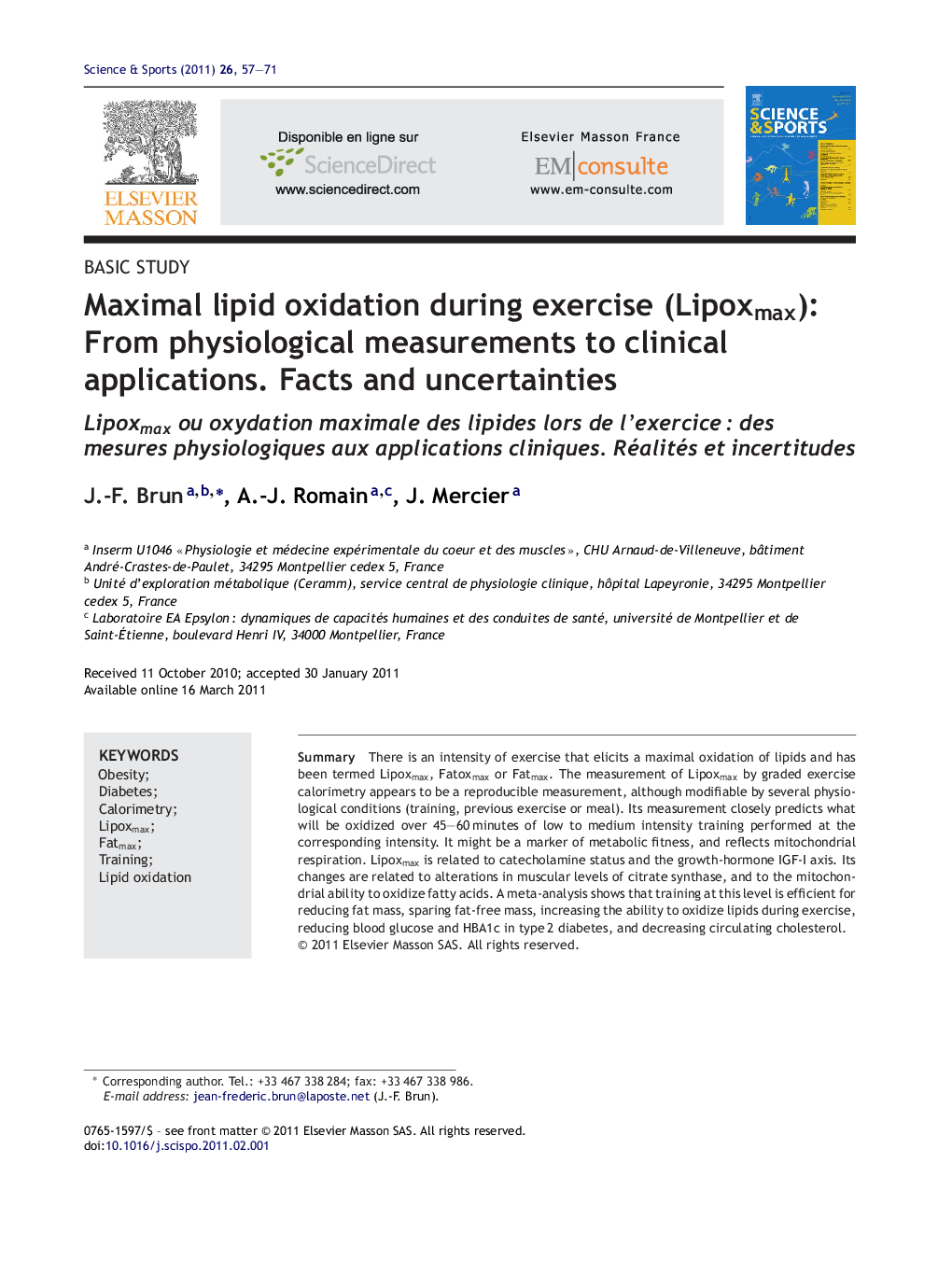| کد مقاله | کد نشریه | سال انتشار | مقاله انگلیسی | نسخه تمام متن |
|---|---|---|---|---|
| 4093517 | 1268313 | 2011 | 15 صفحه PDF | دانلود رایگان |

SummaryThere is an intensity of exercise that elicits a maximal oxidation of lipids and has been termed Lipoxmax, Fatoxmax or Fatmax. The measurement of Lipoxmax by graded exercise calorimetry appears to be a reproducible measurement, although modifiable by several physiological conditions (training, previous exercise or meal). Its measurement closely predicts what will be oxidized over 45–60 minutes of low to medium intensity training performed at the corresponding intensity. It might be a marker of metabolic fitness, and reflects mitochondrial respiration. Lipoxmax is related to catecholamine status and the growth-hormone IGF-I axis. Its changes are related to alterations in muscular levels of citrate synthase, and to the mitochondrial ability to oxidize fatty acids. A meta-analysis shows that training at this level is efficient for reducing fat mass, sparing fat-free mass, increasing the ability to oxidize lipids during exercise, reducing blood glucose and HBA1c in type 2 diabetes, and decreasing circulating cholesterol.
RésuméOn peut déterminer une intensité d’exercice pour laquelle l’oxydation des lipides est maximale, dénommée Lipoxmax, Fatoxmax ou Fatmax. La mesure du Lipoxmax par calorimétrie d’effort est reproductible, mais ce paramètre est modifié par plusieurs des situations physiologiques (entraînement physique, exercice ou repas réalisé dans les heures précédentes). Sa mesure prédit le débit d’oxydation lipidique à plateau d’un exercice modéré à puissance constante de 45 à 60 minutes réalisé à l’intensité correspondante. Il pourrait être un marqueur de « bonne forme métabolique » et reflète la respiration mitochondriale. Le Lipoxmax est influencé par les catécholamines, l’hormone de croissance et l’IGF-I. Ses variations sont liées aux modifications du niveau de la citrate synthase musculaire et à la capacité des mitochondries à oxyder les acides gras. Une méta-analyse montre qu’un entraînement à ce niveau est efficace pour réduire la masse grasse, épargner la masse maigre, augmenter la capacité à oxyder les lipides pendant l’exercice, réduire la glycémie et l’HbA1c dans le diabète de type 2, et diminuer le cholestérol circulant.
Journal: Science & Sports - Volume 26, Issue 2, April 2011, Pages 57–71